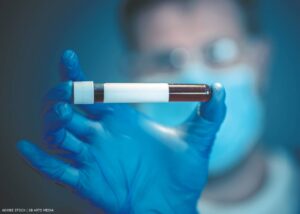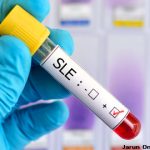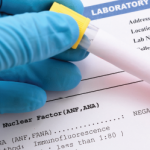Editor’s Pick: “ANA’s are some of the most commonly ordered tests in rheumatology today, so understanding what they are and why they’re so important is vital for rheumatologists.” —Physician Editor Bharat Kumar, MD, MME, FACP, FAAAAI, RhMSUS
Rheumatic disease labs have advanced since our 2004 article by Dr. Peter Schur (updated in 2009).1-3 However, universally available laboratory advancements are not keeping pace with advancements in rheumatic disease pharmaceutical drugs.4 Diagnosing and managing rheumatic diseases is similar to putting the pieces of a puzzle together. Being the experts in ordering and evaluating the meaning of serologies, such as autoantibodies, complements and other immune system biomarkers, is a fun, challenging part of our profession. It is important to know the strengths and weaknesses of these tests and how they can change one’s pre-test probabilities.
In this series, we explore the fascinating world of autoantibodies.
Anti-Cell vs. Anti-Nuclear Antibodies
Patients positive for anti-nuclear antibodies (ANA) are among the most common reasons for rheumatology referrals.
ANAs are antibodies that target any part of the nucleus. However, a positive ANA by indirect immunofluorescence assay (IFA) can also be positive due to autoantibodies targeting extra-nuclear structures, such as in the cytoplasm, or other organelles, such as the mitochondria. Anti-Jo-1 antibody, an anti-synthetase syndrome autoantibody, is one example.
 The International Consensus on ANA Patterns proposes using the term anti-cell antibodies instead of ANAs.5 We agree. However, because the term has not been widely adopted, we use ANA throughout this article.
The International Consensus on ANA Patterns proposes using the term anti-cell antibodies instead of ANAs.5 We agree. However, because the term has not been widely adopted, we use ANA throughout this article.
The Expanding Identification
Millions of different autoantibodies can theoretically be directed toward cellular (and extracellular) contents. The list of autoantibodies that play a role in autoimmune diseases continues to grow. More than 200 autoantibodies have been identified to have a role in systemic lupus erythematosus (SLE), more than 60 in systemic sclerosis (SSc) and more than 25 in idiopathic inflammatory myopathies.5
ANAs in Healthy People
Depending upon methodology and the demographic study population, 10–20% of healthy individuals are ANA positive. A positive ANA in a healthy person could be a normal finding or could herald the possibility of an autoimmune disease developing in the future.6 Other possible causes include drugs, genetics and most inflammatory conditions (e.g., infections and cancer).
More than 75 common autoantibodies have been identified in healthy people.7 The most prevalent of these occur in over 25% of healthy individuals. These may occur due to such mechanisms as loss of tolerance and molecular mimicry after infections (e.g., adeno- and herpes viruses).

